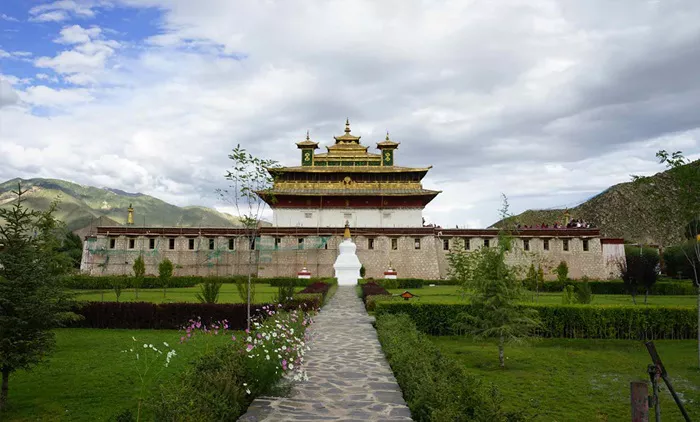Tibetan architecture is a unique blend of cultural, religious, and environmental influences. It reflects the deep spiritual life of the Tibetan people and their adaptation to the challenging Himalayan landscape. This article delves into the key features, historical development, and cultural significance of Tibetan architecture, providing a comprehensive overview for those interested in this fascinating subject.
Historical Development of Tibetan Architecture
The roots of Tibetan architecture trace back to the early Tibetan Empire (7th–9th centuries). During this period, the construction of monumental structures like the Potala Palace began, setting the foundation for future architectural endeavors. Over the centuries, Tibetan architecture evolved, influenced by interactions with neighboring cultures such as Nepal, India, and China, leading to a distinctive style characterized by its unique design elements and construction techniques.
Influences from Neighboring Cultures
Tibetan architecture has been shaped by various cultural exchanges:
- Indian Influence: The introduction of Buddhism from India brought architectural elements like stupas and mandalas, which became integral to Tibetan religious structures.
- Chinese Influence: The Han Chinese architectural style contributed to the development of the dzong style, characterized by fortress-like structures with inward-sloping walls.
- Nepalese Influence: The intricate woodwork and decorative elements in Tibetan architecture show the influence of Nepalese craftsmanship.
Key Features of Tibetan Architecture
Structural Elements
Tibetan buildings are designed to withstand the harsh climatic conditions of the Himalayan region. Key structural features include:
- Thick Walls: Constructed from stone, rammed earth, or mud bricks, these walls provide insulation against cold temperatures and protect against strong winds.
- Flat Roofs: Flat roofs, often made of compacted clay, are common in Tibetan architecture. This design helps in shedding heavy snowfall and provides additional space for communal activities.
- Inward-Sloping Walls: To enhance stability and earthquake resistance, walls are often built to slope inward at a slight angle.
Decorative Elements
The aesthetic appeal of Tibetan architecture is enhanced by various decorative elements:
- Bright Colors: Buildings are often painted in vibrant colors like red, white, and yellow, each holding symbolic meanings in Tibetan culture.
- Wood Carvings: Intricate carvings on doors, windows, and beams depict religious motifs and mythological figures.
- Murals: Interior walls of monasteries and temples are adorned with murals illustrating scenes from Buddhist scriptures and the lives of saints.
Religious Symbolism
Architecture in Tibet is deeply intertwined with religious beliefs:
- Prayer Wheels: Cylindrical devices filled with written prayers are spun by devotees to accumulate merit.
- Prayer Flags: Colorful flags are hung around buildings and rooftops to carry blessings and prayers to the heavens as they flutter in the wind.
- Mandala Layouts: The design of temples and monasteries often follows the geometric patterns of a mandala, symbolizing the universe.
Notable Examples of Tibetan Architecture
Potala Palace
The Potala Palace in Lhasa is a prime example of Tibetan architecture. Built in the 17th century, it served as the winter residence of the Dalai Lama and is renowned for its grandeur and spiritual significance. The palace complex includes over 1,000 rooms, 10,000 shrines, and about 200,000 statues, reflecting the rich cultural and religious heritage of Tibet.
Samye Monastery
Founded in 775, Samye Monastery is Tibet’s first Buddhist monastery. Its design is based on the Indian model of the universe, with the central hall representing Mount Meru, the axis of the world in Buddhist cosmology. The monastery’s architecture symbolizes the cosmos and serves as a place for meditation and spiritual practice.
Norbulingka Palace
Located in Lhasa, Norbulingka Palace was the summer residence of the Dalai Lamas. Built in the 18th century, it is surrounded by a vast park and showcases Tibetan palace architecture. The palace complex includes several structures, each serving different functions, and is renowned for its beautiful gardens and artistic decorations.
Adaptations to the Environment
Tibetan architecture has evolved to meet the challenges posed by the region’s extreme climate and geography. These adaptations ensure the structures’ longevity and functionality:
- Solar Orientation: Buildings are oriented to maximize sunlight and warmth, crucial for survival in the cold Tibetan plateau.
- Windbreaks: Structures often include barriers to protect against harsh winds and sandstorms.
- Terraced Layouts: Common in agricultural areas, these layouts help manage water runoff and prevent erosion.
- High-Altitude Adaptations: Specialized ventilation ensures adequate airflow in the thin mountain air.
- Seasonal Adjustments: For example, windows are covered with yak wool in winter to retain heat.
Conclusion
Tibetan architecture is a testament to the ingenuity and spiritual devotion of the Tibetan people. Its unique features, deeply rooted in religious symbolism and environmental adaptation, offer a glimpse into the rich cultural heritage of Tibet. Whether it’s the grandeur of the Potala Palace, the spiritual ambiance of Samye Monastery, or the serene beauty of Norbulingka Palace, Tibetan architecture continues to inspire awe and admiration.

